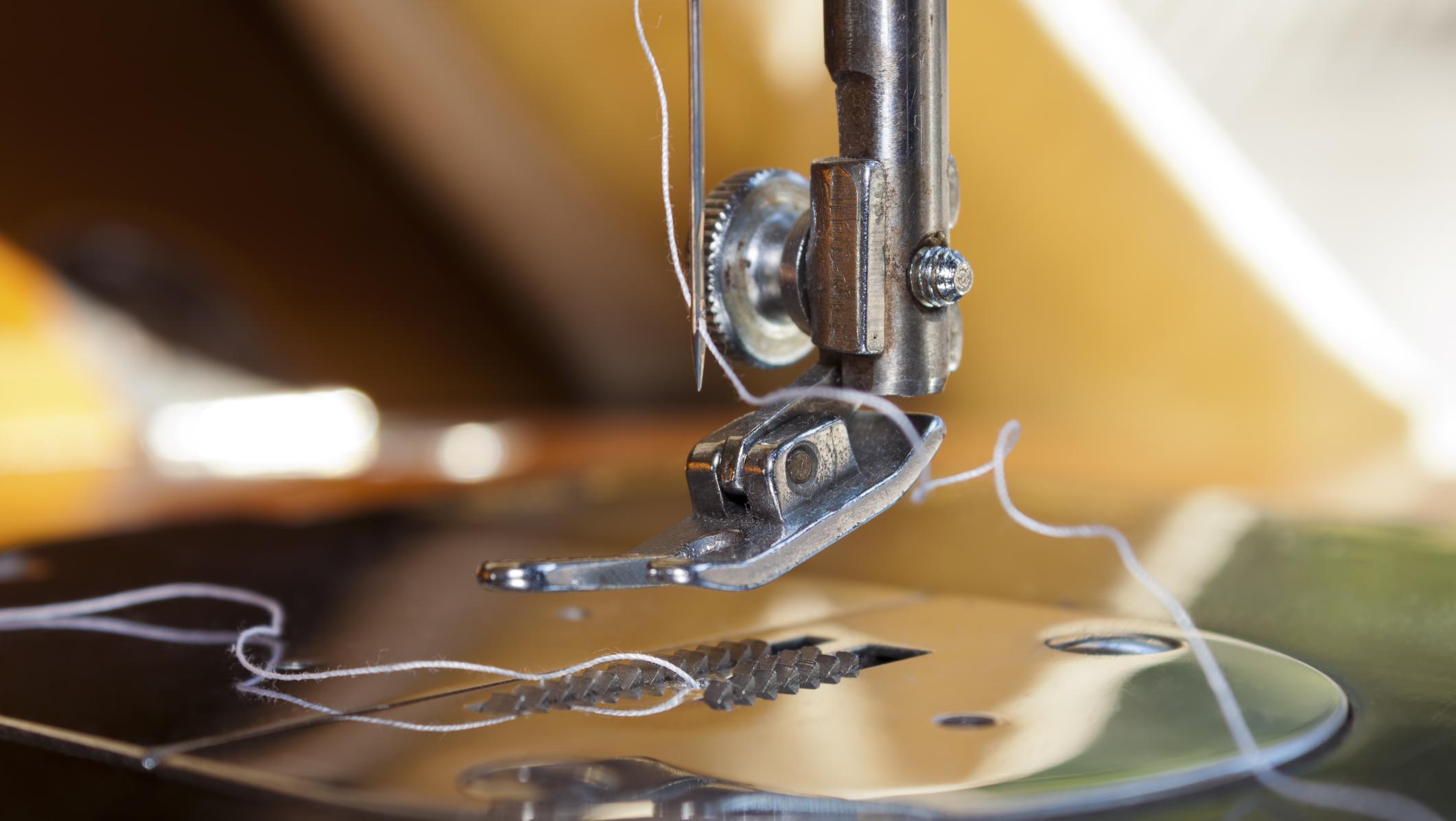I read this and felt instantly connected to a like-minded soul! Enjoy. ----Katherine
5 entrepreneurial lessons from my life as a dressmaker

Reverb founder Erin McKean is also a prolific sewing blogger. The two have more in common than you might think.
Part of the mythology of the startup entrepreneur is an adolescence
spent tinkering. Taking apart small electronics in the garage, building a
computer from a kit, assembling a trebuchet in the backyard and scaring
the neighbors. Taking things apart and putting them back together again
symbolizes the inquisitive, creative, disruptive entrepreneurial
mindset, with an additional dose of “I can do it better” arrogance.
Because the world of startup founders is so overwhelmingly male, when we look at an early history of “making” as proof of entrepreneurial destiny, we tend to focus on boys and their toys.
In fact, any sufficiently nerdy activity, if pursued with enough single-minded focus, can prepare you for founding a startup.
For me, that sufficiently nerdy activity is sewing. Along with being a tech startup founder, I’m also a longtime sewing blogger and published author of articles about sewing and books about fashion. A lot of what sewing has taught me applies equally well to entrepreneurship.
When you start down the startup path, there is no shortage of people who are willing to tell that what you’re doing will never work, that there are too many other, better options out there, and oh, by the way, you look stupid. Early training in ignoring that kind of feedback is extremely valuable.
Being confident in your ideas – whether you’re working on a new application or a new dress — is essential in realizing your vision. (It’s as important to ignore wrong positive comments as it is to ignore wrong negative comments!)
The actual process involves something that’s closer to product development than the ballgown scene in Cinderella. There’s a prototype, which I usually make in ugly (or at least humorous) fabric. I tweak that for fit and other important qualities, such as making sure the pockets are deep enough to hold all my stuff (up to and including an iPad mini). Then I make multiple subsequent versions, each one iterating on some key feature (honestly, usually pockets), until I feel comfortable sewing it up in the (usually expensive) fabric that was my original goal.
In sewing, just as in product design, it’s the folks who expect perfect versions on the first go-round who are the most discouraged when things don’t go to plan. The more comfortable you are with let’s-try-it-and-see, the better things go in the long run.
It’s tempting to think that you can rescue something that you know in your heart is a wadder with just a little more time, with a little more work, a few more alterations … The truth is, you can’t. Nothing you can do will make something in an itchy fabric completely comfortable. No amount of coaching will help a team member who has radically different goals than the rest of the organization. A product that only gets a tepid “meh” response, no matter how many different audiences you put it in front of, is not a product that will respond dramatically to tweaking.
It can be hard to admit that something you’ve put so much time and effort (and often love) into is destined for the ragbag. But every minute you spend on a wadder is a minute you aren’t sewing something new and rewarding.
In sewing, there are plenty of people who will teach you how to make a version of whatever’s the hot new fashion, however ill-advised. Leather jeggings? There’s a pattern for that. In the same way that the most successful startup founders aren’t in it to cash in on a me-too idea, the most accomplished seamstresses aren’t merely trying to get a designer wardrobe on the cheap. The highest calling in either endeavor is to create something completely new, something the world wouldn’t have seen if not for your idea. Sometimes that’s a Tetris dress, and sometimes that’s a new take on the dictionary, and sometimes that’s a discovery reader. Sewing gave me the confidence to keep going with my own ideas, instead of producing knockoff versions of other people’s.
Likewise, startups are not (mythology to the contrary) instant tickets to riches and renown. Most startup founders, if they calculated their hourly salaries, would crumple up the paper and throw it away — and then get back to work.
There’s a lot to be said for the psychic paycheck that comes from the joy of making — of taking an idea and bringing it into existence, whether it’s a dress that is exactly what you want, or whether it’s an API that lets other people build what THEY want.
I hope that somewhere out there is another teen bent over a hand-me-down sewing machine, cranking out the nth iteration of her own idea, learning all the skills of inventiveness, persistence, problem-solving, and joyful creation that my years bent over my own sewing machine have taught me. I hope that when she launches her own startup, she’ll let me invest!
Because the world of startup founders is so overwhelmingly male, when we look at an early history of “making” as proof of entrepreneurial destiny, we tend to focus on boys and their toys.
In fact, any sufficiently nerdy activity, if pursued with enough single-minded focus, can prepare you for founding a startup.
For me, that sufficiently nerdy activity is sewing. Along with being a tech startup founder, I’m also a longtime sewing blogger and published author of articles about sewing and books about fashion. A lot of what sewing has taught me applies equally well to entrepreneurship.
1. Ignore What Other People Think
When I started sewing back in junior high school, in the depths of the fashion sinkhole known as the 1980s, sewing was deeply uncool. Sewing was what you were forced to do in Home Economics class. In fact, wearing clothes “made by loving hands at home” and therefore being made fun of by other kids is even a sturdy trope of children’s literature.When you start down the startup path, there is no shortage of people who are willing to tell that what you’re doing will never work, that there are too many other, better options out there, and oh, by the way, you look stupid. Early training in ignoring that kind of feedback is extremely valuable.
Being confident in your ideas – whether you’re working on a new application or a new dress — is essential in realizing your vision. (It’s as important to ignore wrong positive comments as it is to ignore wrong negative comments!)
2. Tweak Until You Get It Right
Often people imagine that sewing a dress is just a matter of finding a pattern, adding some fabric, and emerging from a pop-soundtrack montage a few hours later to twirl in front of the mirror in your perfect garment.The actual process involves something that’s closer to product development than the ballgown scene in Cinderella. There’s a prototype, which I usually make in ugly (or at least humorous) fabric. I tweak that for fit and other important qualities, such as making sure the pockets are deep enough to hold all my stuff (up to and including an iPad mini). Then I make multiple subsequent versions, each one iterating on some key feature (honestly, usually pockets), until I feel comfortable sewing it up in the (usually expensive) fabric that was my original goal.
In sewing, just as in product design, it’s the folks who expect perfect versions on the first go-round who are the most discouraged when things don’t go to plan. The more comfortable you are with let’s-try-it-and-see, the better things go in the long run.
3. Don’t Be Afraid to Let It Go
People who sew have a special word for those projects that are so frustrating, so unrewarding, or so just plain WRONG. We call them “wadders,” as in “just wad them up in the back of the closet and try to forget them.”It’s tempting to think that you can rescue something that you know in your heart is a wadder with just a little more time, with a little more work, a few more alterations … The truth is, you can’t. Nothing you can do will make something in an itchy fabric completely comfortable. No amount of coaching will help a team member who has radically different goals than the rest of the organization. A product that only gets a tepid “meh” response, no matter how many different audiences you put it in front of, is not a product that will respond dramatically to tweaking.
It can be hard to admit that something you’ve put so much time and effort (and often love) into is destined for the ragbag. But every minute you spend on a wadder is a minute you aren’t sewing something new and rewarding.
4. You Do You
In a startup, it’s always tempting to look around at what everyone else is doing. “Wow,” you think, “startup X is doing great things … maybe we should be trying that too?” Suddenly, pivoting to “Yo for Dogs” seems like a viable idea.In sewing, there are plenty of people who will teach you how to make a version of whatever’s the hot new fashion, however ill-advised. Leather jeggings? There’s a pattern for that. In the same way that the most successful startup founders aren’t in it to cash in on a me-too idea, the most accomplished seamstresses aren’t merely trying to get a designer wardrobe on the cheap. The highest calling in either endeavor is to create something completely new, something the world wouldn’t have seen if not for your idea. Sometimes that’s a Tetris dress, and sometimes that’s a new take on the dictionary, and sometimes that’s a discovery reader. Sewing gave me the confidence to keep going with my own ideas, instead of producing knockoff versions of other people’s.
5. The Joy of Making
When you get right down to it, sewing is hard work (there’s a reason most fast fashion is produced in sweatshops, in places where people are happy to earn pennies for repetitive, backbreaking labor). Depending on the materials you use and the equipment you invest in, sewing may not save you much money (especially if you factor in the opportunity cost of money-making activities you could have done in the same time). The main reason that people sew, in these days of $2 T-shirts, is because they enjoy it.Likewise, startups are not (mythology to the contrary) instant tickets to riches and renown. Most startup founders, if they calculated their hourly salaries, would crumple up the paper and throw it away — and then get back to work.
There’s a lot to be said for the psychic paycheck that comes from the joy of making — of taking an idea and bringing it into existence, whether it’s a dress that is exactly what you want, or whether it’s an API that lets other people build what THEY want.
I hope that somewhere out there is another teen bent over a hand-me-down sewing machine, cranking out the nth iteration of her own idea, learning all the skills of inventiveness, persistence, problem-solving, and joyful creation that my years bent over my own sewing machine have taught me. I hope that when she launches her own startup, she’ll let me invest!
Erin McKean is the founder of Reverb , a news
discovery app for the iPhone and iPad, and the online dictionary
Wordnik.com. Previously, she was the editor in chief of American
dictionaries for Oxford University Press. A lexicographer by training,
she is also the author of several books, including "Weird and Wonderful
Words" and "The Secret Lives of Dresses."
